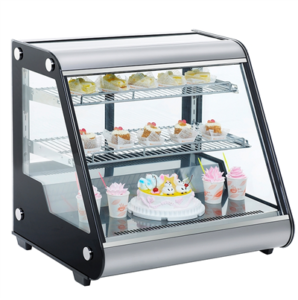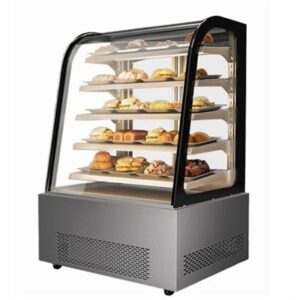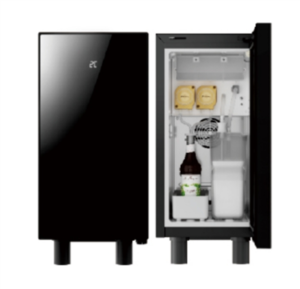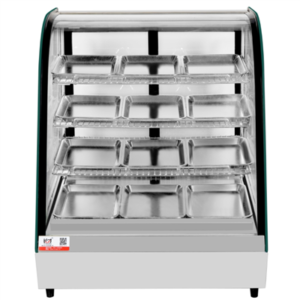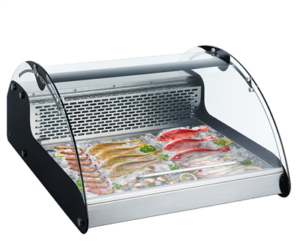Display cabinets rely on advanced cooling technologies to preserve perishable goods while optimizing energy efficiency. Here’s a breakdown of the primary cooling methods used in modern display cabinets and their best-use scenarios:
1. Direct Cooling (Static Cooling)
- Mechanism: Uses natural convection; evaporator coils are embedded in cabinet walls, creating temperature zones (colder at the bottom).
- Pros: Energy-efficient (20–30% less power than forced-air systems), quieter operation.
- Cons: Requires manual defrosting; temperature fluctuations (±) near the door.
- Best For: Low-traffic retail stores or budget-conscious setups.
2. Forced-Air Cooling (Air-Cooled/Frost-Free)
- Mechanism: Fans circulate cold air uniformly, paired with periodic heating cycles to prevent frost buildup.
- Pros: Stable temperatures (±), ideal for high-humidity environments.
- Cons: Higher energy use due to defrost cycles.
- Best For: Supermarkets, pharmacies, and commercial kitchens.
3. Hybrid Cooling (Dual-Zone Systems)
- Mechanism: Combines direct cooling (for fresh-keeping at to ) and forced-air freezing (at ).
- Pros: Space-saving, reduces energy consumption by 20% vs. separate units.
- Best For: Retailers needing both chilled and frozen displays (e.g., convenience stores).
4. Liquid Cooling (Emerging Tech)
- Mechanism: Uses coolant-filled tubes or cold plates to absorb heat, common in high-end medical/lab cabinets.
- Pros: Ultra-stable temperatures (±), 40% more efficient than air-cooled systems.
- Cons: High upfront cost.
- Best For: Precision environments like vaccine storage.
Key Considerations When Choosing
- Energy Efficiency: Look for inverter compressors (saves 25% energy).
- Maintenance: Forced-air systems need coil cleaning; direct cooling requires defrosting.
- Humidity Control: Opt for cabinets with 85–95% humidity settings for fresh produce.
Pro Tip: Pair cabinets with LED lighting and anti-fog glass to enhance visibility and cut energy use by 15%.
